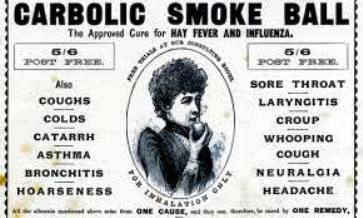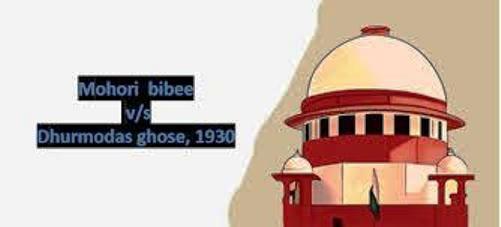The students who prepare for the All India Bar Examination (AIBE), Should Check key provisions of the C.P.C., landmark cases, and multiple-choice questions (MCQs) to aid in your exam success.
📖 Introduction to the Code of Civil Procedure (C.P.C.)
The Code of Civil Procedure, 1908 (C.P.C.) lays down the procedure for civil suits in India. It consists of two parts:
✔ Part I – Sections 1 to 158 (General Principles)
✔ Part II – The First Schedule (Orders & Rules)
It ensures a fair and systematic process for resolving civil disputes.
📌 Important Topics & Landmark Cases in C.P.C.
1️⃣ Jurisdiction of Civil Courts (Sections 9-20 C.P.C.)
🔹 Case: Kiran Singh v. Chaman Paswan (1955) – Effect of Lack of Jurisdiction
📌 Facts: A case was filed in a court lacking proper jurisdiction, and the defendant challenged its validity.
⚖ Judgment: The Supreme Court held that a decree passed by a court without jurisdiction is null and void.
✅ Conclusion: Jurisdiction is fundamental—if absent, the entire proceeding is invalid.
2️⃣ Res Judicata (Section 11 C.P.C.)
🔹 Case: Satyadhyan Ghosal v. Deorajin Debi (1960) – Finality of Decisions
📌 Facts: A tenant tried to re-litigate an issue already decided in a previous suit.
⚖ Judgment: The Supreme Court ruled that once an issue is decided, it cannot be re-opened in another suit between the same parties.
✅ Conclusion: The doctrine of Res Judicata prevents repetitive litigation.
3️⃣ Doctrine of Lis Pendens (Section 52 of Transfer of Property Act)
🔹 Case: Bellamy v. Sabine (1857) – Protection of Pending Litigation
📌 Facts: A property was sold while a dispute over its ownership was still pending.
⚖ Judgment: The court held that a transferee of a property under litigation is bound by the final decision.
✅ Conclusion: Any transfer of property during litigation is subject to the court’s decision.
4️⃣ Temporary Injunctions (Order 39, Rules 1-2 C.P.C.)
🔹 Case: Dalpat Kumar v. Prahlad Singh (1992) – Principles of Injunction
📌 Facts: A dispute arose over property possession, and one party sought an injunction to prevent the other from entering.
⚖ Judgment: The Supreme Court ruled that an injunction is granted only when the applicant proves a prima facie case, balance of convenience, and irreparable injury.
✅ Conclusion: Courts grant injunctions only in urgent and justifiable cases.
5️⃣ Ex-Parte Decree & Remedies (Order 9 Rule 13 C.P.C.)
🔹 Case: Sangram Singh v. Election Tribunal (1955) – Setting Aside Ex-Parte Decree
📌 Facts: A party failed to appear in court, and an ex-parte decree was passed. Later, they sought to set it aside.
⚖ Judgment: The Supreme Court stated that ex-parte decrees can be set aside only when there is a valid reason for absence.
✅ Conclusion: Courts do not easily set aside ex-parte decrees unless justified.
📝 MCQs for AIBE Preparation (C.P.C.)
1️⃣ Jurisdiction & Res Judicata
Q1. Under which section does the C.P.C. define the jurisdiction of civil courts?
A) Section 9
B) Section 11
C) Section 34
D) Section 100
✅ Answer: A) Section 9
Q2. The principle of Res Judicata is covered under:
A) Section 10
B) Section 11
C) Section 13
D) Section 14
✅ Answer: B) Section 11
2️⃣ Lis Pendens & Injunctions
Q3. The doctrine of Lis Pendens applies to:
A) Criminal cases only
B) Sale of property under dispute
C) Marriage disputes
D) Constitutional cases
✅ Answer: B) Sale of property under dispute
Q4. The three conditions for granting an injunction are:
A) Res Judicata, Jurisdiction, Compensation
B) Prima facie case, Balance of convenience, Irreparable injury
C) Doctrine of Lis Pendens, Good faith, Possession
D) None of the above
✅ Answer: B) Prima facie case, Balance of convenience, Irreparable injury
3️⃣ Ex-Parte Decrees & Civil Procedure
Q5. Which section deals with setting aside an ex-parte decree?
A) Order 9 Rule 6
B) Order 9 Rule 13
C) Order 14 Rule 5
D) Order 21 Rule 1
✅ Answer: B) Order 9 Rule 13
Q6. In which landmark case did the Supreme Court clarify the grounds for setting aside an ex-parte decree?
A) Kiran Singh v. Chaman Paswan
B) Satyadhyan Ghosal v. Deorajin Debi
C) Sangram Singh v. Election Tribunal
D) Bellamy v. Sabine
✅ Answer: C) Sangram Singh v. Election Tribunal



